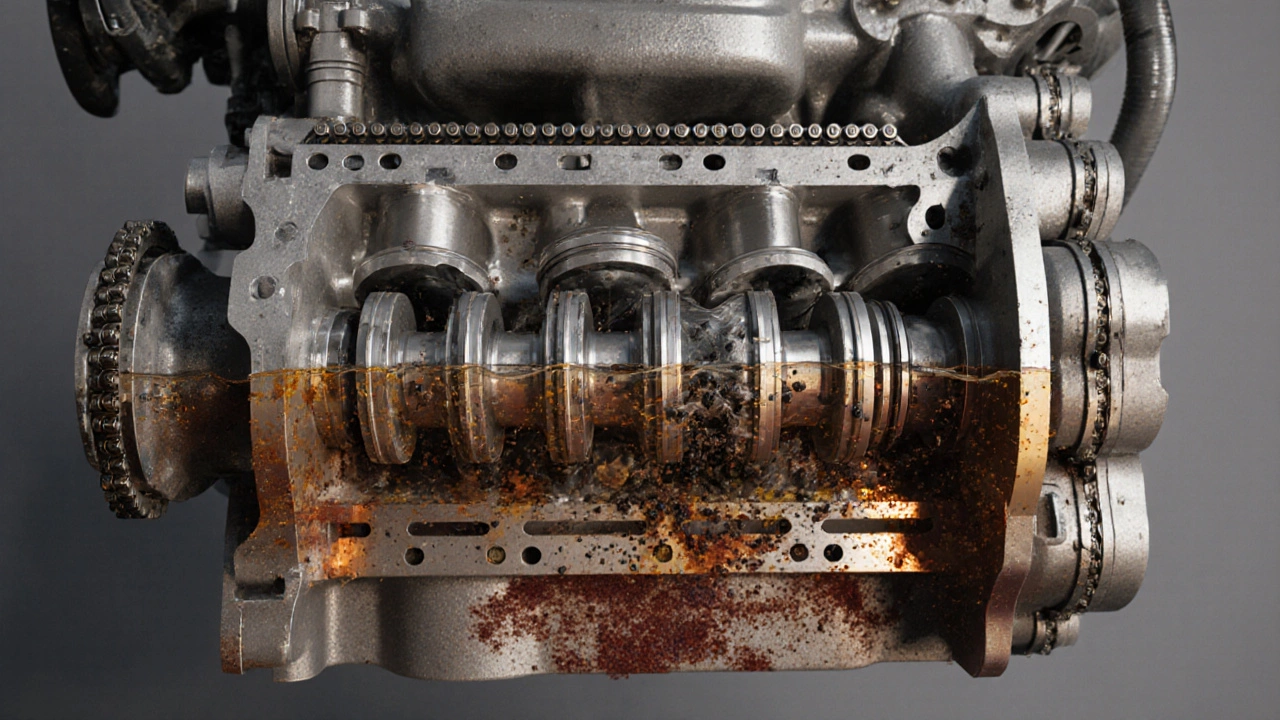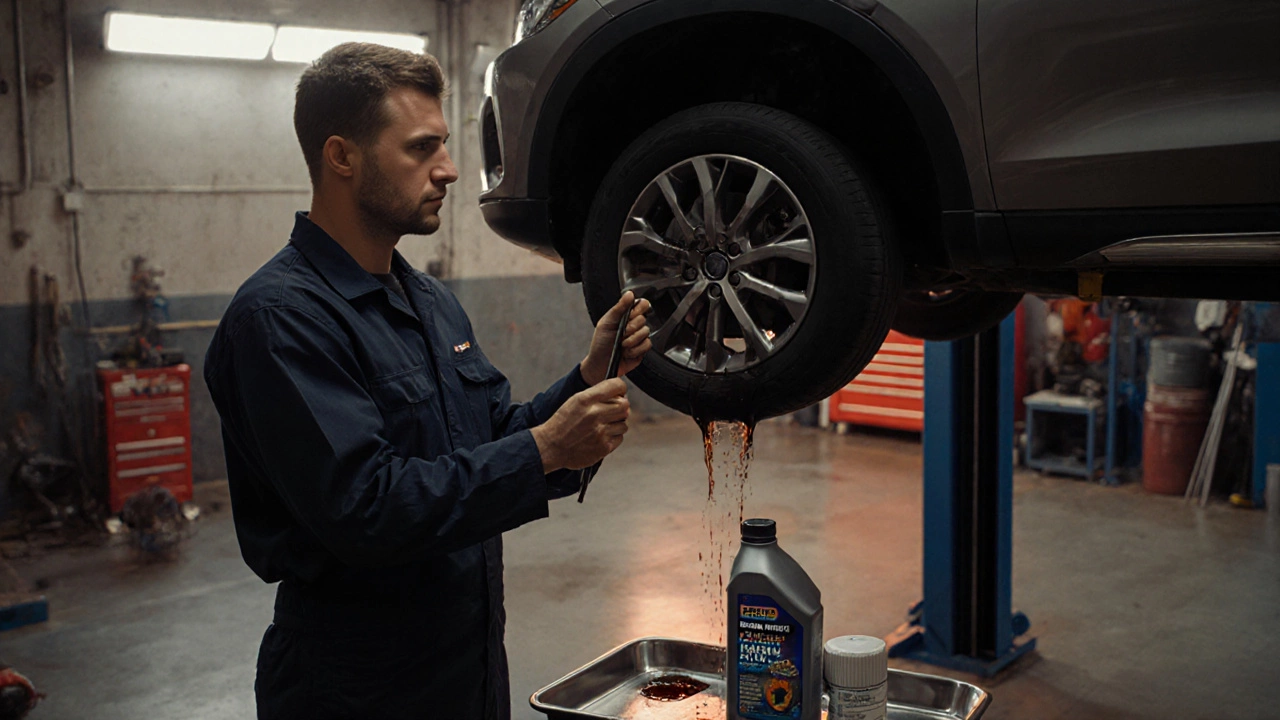Oil Change Cost Calculator
How Skipped Oil Changes Affect Your Budget
Calculate the financial impact of missing oil changes compared to repair costs
Results will appear here...
Cost Comparison
£0
£0
Warning: Your engine may be at risk of severe damage. Consider an immediate oil change.
Imagine driving 3,000 miles and staring at the dashboard because the engine suddenly coughs and dies. The most common culprit? engine oil that’s been ignored for far too long.
Why Regular Oil Changes Matter
Engine oil is a lubricating fluid that reduces friction between moving parts, carries heat away from hot spots, and traps contaminants. When you change it on schedule, you keep those functions running at peak efficiency. Skipping the change means the oil thins, contaminates, and loses its protective film.
Most manufacturers recommend an oil change every 5,000-10,000 miles, depending on the oil type and driving conditions. The schedule isn’t arbitrary; it’s based on lab tests that show how quickly oil degrades under heat and shear forces.
What Happens When Oil Goes Bad
Oil degradation follows a predictable path:
- Viscosity drops - the oil becomes thinner and can’t keep a film between metal surfaces.
- Contaminants build up - metallic particles, fuel residue, and soot accumulate.
- Acidic by‑products form - combustion by‑products lower the oil’s pH, accelerating corrosion.
These changes happen faster if you drive in stop‑and‑go traffic, tow heavy loads, or operate in extreme temperatures.
Immediate Symptoms of Skipping an Oil Change
- Warning lights: The oil pressure sensor (Oil pressure sensor) will trigger a dashboard alert when pressure falls.
- Engine knocking: As the oil film thins, metal parts hit each other, creating a metallic clunk.
- Increased exhaust smoke: Burning oil droplets produce blue‑tinted smoke, especially on warm‑up.
- Rough idle: The engine may shake at low RPMs because internal friction isn’t being dampened.

Long‑Term Damage to Engine Components
When oil is not refreshed, the damage compounds:
| Attribute | Fresh Oil | Degraded Oil |
|---|---|---|
| Viscosity (SAE rating) | Consistent | Thinner, uneven |
| Contaminant Level | Low | High (metal shavings, carbon) |
| Color | Honey‑gold | Dark brown, gritty |
| Protective Ability | Optimal | Reduced, leading to wear |
Key parts that suffer the most include:
- Engine bearings - wear out faster, causing bearing knock.
- Pistons and rings - increased scuffing, loss of compression.
- Camshaft - cam lobes lose their smooth profile.
- Catalytic converter - oil vapors foul the catalyst, raising emissions.
In worst‑case scenarios, the engine can seize, turning a routine maintenance oversight into a $5,000‑plus repair bill.
How to Spot Trouble Early
Even before the warning light flickers, a few simple checks can alert you:
- Oil dipstick reading: Pull the dipstick, wipe, reinsert, and check the level and color. Dark, sludgy oil signals neglect.
- Oil smell: A burnt, acrid odor from the oil filler cap means it’s overheated.
- Noise inspection: Listen for high‑pitched squealing during acceleration - it often means the oil isn’t lubricating the timing chain.

Cost of Ignoring Oil Changes
Let’s break down the numbers. A standard synthetic oil change costs around £70 in the UK, including filter replacement. Skipping ten oil changes could save you £700, but the risk is a premature engine rebuild that can exceed £3,000.
Beyond money, there’s fuel‑efficiency loss. Studies by the AA show that a car with dirty oil can burn up to 2% more fuel, costing an extra £120 per year on a typical commute.
Best Practices to Keep Your Engine Healthy
Here’s a quick checklist to make oil changes painless:
- Know your oil type: Use the viscosity grade (e.g., 5W‑30) recommended by the manufacturer.
- Replace the oil filter (Oil filter) every change - a clogged filter lets debris circulate.
- Check oil level monthly, especially after long trips.
- Stick to the service schedule in the owner’s manual, even if mileage seems low.
- Watch the temperature gauge. Overheating often points to oil that can’t carry heat away.
Following these steps ensures the oil stays clean, the engine stays cool, and you avoid costly repairs.
When to Seek Professional Help
If you notice any of the following, it’s time to let a mechanic inspect the engine:
- Persistent oil pressure warning after topping up.
- Excessive smoke that doesn’t disappear after a few minutes.
- Unusual knocking that increases with engine speed.
Professional diagnostics can measure oil viscosity (using a viscometer) and check for metal particles in the oil sample. Early detection can save you from a full engine overhaul.
How often should I change my engine oil?
Most modern cars with synthetic oil need a change every 7,500-10,000 miles, but always follow the interval in your owner’s manual.
Can I drive with low oil level?
Driving with low oil can cause rapid engine wear and lead to seizure. Top up immediately or get it fixed before moving the car.
What does dark, gritty oil indicate?
Dark, gritty oil shows oxidation and contamination. It’s a sign you’re overdue for an oil change.
Will skipping oil changes affect fuel economy?
Yes. Thickened or dirty oil increases internal friction, which can reduce fuel efficiency by 1-3%.
Is it okay to mix old and new oil during a change?
Mixing reduces the effectiveness of the fresh oil’s additives and can shorten the interval before the next change.

